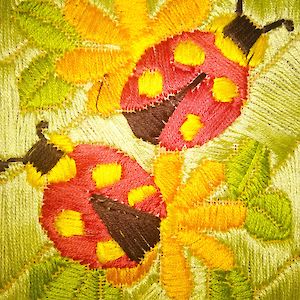Monkey Pox was named so as it was first identified among laboratory monkeys in 1958 in Denmark. But it is widely present across animal species. It is a viral disease. Monkey pox is similar to small pox which was eradicated from the face of earth by consolidated global efforts in 1980. Monkey pox virus is a member of orthopoxvirus family similar to small pox but with less severity , less communicable and rarely fatal. The first cases in humans were first identified in Democratic Republic of Congo in 1970. Upto 2003 the cases were documented mostly in Central and Western Africa. In 2003 it was documented in US. But ll the cases reported were related to contact with animals. Till this year no human to human transmission was recorded. In may 2022 the outbreak was confirmed with a cluster of cases in UK. Now in India so far 4 cases have been officially declared. First 3 cases were reported in Kerala and all 3 had history of International travel whereas 4th case from Delhi had only history of Domestic travel according to various news agencies. So, I thought it is necessary to spread awareness regarding monkey pox.
How monkey pox is transmitted?
1. Animal-to-person transmission occurs through broken skin, like from bites or scratches, or through direct contact with an infected animal’s blood, bodily fluids or pox lesions (sores).
2. Person-to-person transmission occurs when you come in contact with the sores, scabs or oral fluids of an infected person usually through close or intimate situations.
3. Contact with contaminated materials like clothing, bedding and other linens used by an infected person or animal.
3. The coughs or sneezes of a person with monkey pox when they're close to you.
4. Eating meat of monkey pox infected animal without proper cooking.
Symptoms of monkey pox infection:
First symptoms of monkey pox infection are:
- Fever
- Headache
- Backache
- Muscle aches
- Tiredness
- Swollen glands
- Chills
Followed by a rash appearing after 1-5 days of first symptoms that can look like pimples or blisters that appears on the face, inside the mouth, and on other parts of the body, like the hands, feet, chest, genitals, or anus. Usually it starts on face and then spread to other parts of the body.
The rash starts as raised spots, which turn into small blisters filled with fluid just like the ones we see during chicken pox. These blisters eventually form scabs which later fall off. The symptoms usually clear up in a few weeks. During the phase when the symptoms are present you can transmit the disease to other people.
Rarely the disease gets complicated and the infection can include Pneumonia, secondary skin infections, confusion and eye problems.
According to world health organisation, the fatality rate of the present strain is 3-5%
Diagnosis of monkey pox:
PCR testing of skin lesions – the roof or fluid from vesicles and pustules, and dry crusts; If possible biopsy of skin lesion is also recommended.
Treatment:
Monkey pox is usually a self-limiting disease with symptoms lasting from two to four weeks. Most people with monkey pox get better on their own without treatment.
Following diagnosis, doctor will monitor the condition and try to relieve the symptoms. Preventing dehydration is very important as in case of any viral disease. Doctors may give you antibiotics to treat secondary bacterial infections if they develop. There is no currently approved antiviral treatment for monkey pox.
Prevention :
Similar to those we follow for prevention and spread of Covid 19
- Avoid contact with infected animals (especially sick or dead animals).
- Avoid contact with bedding and other materials contaminated with the virus.
- Thoroughly cook all foods that contain animal meat or parts.
- Wash hands frequently with soap and water.
- Avoid contact with people who may be infected with the virus.
- Wear a mask that covers your mouth and nose when around others.
- Clean and disinfect frequently touched surfaces.
- Use personal protective equipment (PPE) when caring for people infected with the virus.
- Practice safe sex
If you're experiencing the tell-tale symptoms follow these tips provided by W.H.O
- Keep the skin dry and uncovered
- Clean the skin with sterilized water or antiseptics
- Take a warm bath with baking soda or Epsom salts for lesions on the body
- For lesions in the mouth, use a saltwater rinse like you would for canker sores
- If you live in a shared household, isolate in your room and if possible, use a designated bathroom.
- Use separate eating utensils, towels and electronics, and do your own laundry.
- Open your windows whenever possible for good ventilation, but avoid sweeping and vacuuming, which could disturb virus particles found on the floors and lead to further infections.
Lets follow all the Covid appropriate behaviours we learnt in the past 2 years and prevent spread of monkey pox cases amongst ourselves.







